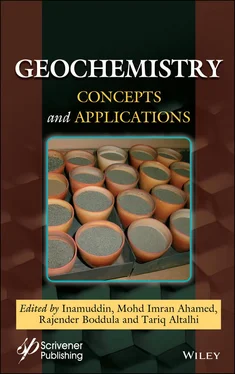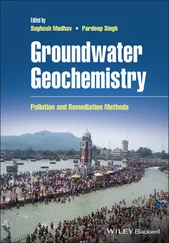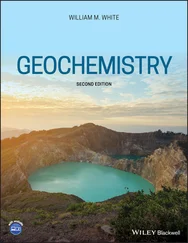1.4.2 Mitigating Human Exposure and Health Risks
Environmental and human health risk assessment and mitigation are required to safeguard human health against toxic contaminants in serpentinitic geological systems. A detailed discussion of the human health risk assessment protocol and mitigation for toxic contaminants in serpentinitic geological environments is presented in an earlier review [4]. Here, an overview of the risk analysis, evaluation, and mitigation, including specific interventions, is presented based on literature [4, 10].
This step entails the identification and characterization of the nature of human exposure and health risks. Key activities include (1) determining the concentrations of the toxic contaminants, (2) identifying the human population at risk, (3) determining exposure pathways, and (4) estimating daily intakes of toxic contaminants relative to permissible maximum guidelines.
Risk evaluation involves the determination of the likelihood of occurrence and the associated human health consequences of exposure to toxic contaminants. A risk evaluation framework based on a combination of likelihood and consequences can be used to rank the risks as follows: “extremely high”, “high”, “moderate”, and “low/negligible”. Such a framework can be used to identify human health risks warranting mitigation and for prioritization and allocation of scarce resources.
Risk mitigation involves identifying the mitigation interventions and evaluating their potential to address the human health risks, and in terms of feasibility and cost. This is then followed by the implementation of the mitigation strategy, and subsequent monitoring and evaluation and feedback to improve performance.
1.4.2.4 Overview of Mitigation Interventions
Several mitigation measures have been highlighted for safeguarding human health in serpentinitic geological environments [4]. These include (1) proper land use planning to avoid human settlement in hotspot areas, (2) the use of appropriate barriers and safety procedures (e.g., special respirators) to isolate humans from occupational exposure to toxic contaminants, (3) soil conservation practices and use of soil amendments such as biochar to reduce erosion, mobility, and dissemination of toxic contaminants [82, 83]; (4) restoration and stabilization of post-mining landscapes to reduce emissions of toxic contaminants [84], (5) the application of low-cost methods for the removal of toxic contaminants in drinking water sources such as biochar-based filters [85], and (6) in the case of chrysotile asbestos, the development and use of alternative substitutes which are non-toxic in order to ultimately stop the mining, processing, and application of chrysotile [4, 36]. In most cases, depending on the severity of the human exposure and health risks, a combination of several interventions may be required to safeguard human health.
The medical geology of serpentines is an emerging topic of research that requires an integration of earth sciences, public health and environmental sciences. As pointed out in an earlier paper, further research is required to address several knowledge gaps [4]. Addressing these knowledge gaps is key to risk assessment and mitigation of the human health risks associated with serpentine geological systems.
1 (1) Understanding the occurrence and spatial distribution of serpentines in various countries hosting serpentinitic geological environments through the application of geostatistical spatial analysis and remote sensing.
2 (2) Detailed understanding of the behavior and fate processes of toxic contaminants, including their speciation and partitioning into various phases through mass balance analysis and speciation modelling.
3 (3) Understanding the human toxicology and ecotoxicology of toxic contaminants, including determining key exposure routes, bioavailability and bioaccesibility, and daily intakes using established protocols for human health risk assessment.
4 (4) Comprehensive understanding of the relationship between toxic contaminants and human health outcomes through case-control epidemiological studies, particularly in Africa.
5 (5) Establishing environmental and human health surveillance systems to determine baseline conditions and current status of human and environmental health in serpentinitic geological environments.
Understanding the nature and human exposure and health risks of toxic geogenic contaminants in serpentinitic ultramafic geological systems is critical for safeguarding human health. The current chapter presented an overview of the nature, occurrence, environmental behavior, and human exposure and health risks associated with toxic geogenic contaminants in serpentinitic ultramafic geological environments. Toxic geogenic contaminants of human health concern include toxic metals, rare earth elements, and chrysotile asbestos. Occupational and non-occupational exposure are the dominant human intake pathways. Human occupational exposure via inhalation occurs in industrial settings such as mining, milling, sculpturing, engraving, and carving. Non-occupational exposure pathways include inhalation of toxic geogenic contaminants and ingestion of contaminated geophagic earths, wild foods, herbal medicines, and water. Weak and poorly enforced occupation and environmental regulations, lack of environmental and human health surveillance systems coupled with high consumption of potentially contaminated wild foods, geophagic earths, and water increase human exposure and health risks in Africa. The prevalence of geophagy and high dietary intake of iron coupled with genetic disposition increases iron overload and the associated human health risks among native Africans. The human health risks of chrysotile include asbestosis, cancers, and mesothelioma, while toxic metal and rare earth elements induce oxidative stress which damages biomolecules such as deoxyribonucleic acid. Human health risks may also occur via synergistic interactions among toxic geogenic contaminants (e.g., chrysotile and toxic metals), and even between toxic geogenic contaminants and other health stressors such as the prevalence of infectious diseases. Mitigation measures to safeguard human health, and future research directions were highlighted.
This chapter is based on research project entitled, “ The Potential of Native Plants of the Ultramafic Great Dyke of Zimbabwe for the Phytoremediation and Restoration of Metalliferrous Mine Wastes ”, which was funded by the British Ecological Society (BES) Ecologists in Africa Grant No. 5774-6818. I am very grateful for the financial support provided by the British Ecological Society (BES) Ecologists in Africa. However, I am solely responsible for the views expressed in this chapter, and the decision to publish the research, BES, and its affiliates played no role whatsoever in the research and decision to publish the chapter.
1. Oze, C., Skinner, C., Schroth, A.W., Coleman, R.G., Growing up green on serpentine soils: biogeochemistry of serpentine vegetation in the Central Coast Range of California. Appl. Geochem. , 23, 12, 3391–3403, 2008.
2. Alexander, E.B., Coleman, R.G., Harrison, S.P., Keeler-Wolfe, T., Serpentine geoecology of western North America: geology, soils, and vegetation , Oxford University Press, Oxford, 2007.
3. Bundschuh, J., Maity, J.P., Mushtaq, S., Vithanage, M., Seneweera, S., Schneider, J., Bhattacharya, P., Khan, N.I., Hamawand, I., Guilherme, L.R., Reardon-Smith, K., Medical geology in the framework of the sustainable development goals. Sci. Total Environ. , 581, 87–104, 2017.
Читать дальше



